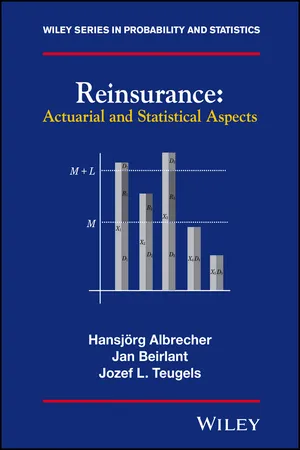
Reinsurance
Actuarial and Statistical Aspects
- English
- ePUB (mobile friendly)
- Available on iOS & Android
About This Book
Reinsurance: Actuarial and Statistical Aspects provides a survey of both the academic literature in the field as well as challenges appearing in reinsurance practice and puts the two in perspective. The book is written for researchers with an interest in reinsurance problems, for graduate students with a basic knowledge of probability and statistics as well as for reinsurance practitioners. The focus of the book is on modelling together with the statistical challenges that go along with it. The discussed statistical approaches are illustrated alongside six case studies of insurance loss data sets, ranging from MTPL over fire to storm and flood loss data. Some of the presented material also contains new results that have not yet been published in the research literature. An extensive bibliography provides readers with links for further study.
Frequently asked questions
Information
1
Introduction
1.1 What is Reinsurance?
Table of contents
- Cover
- Title Page
- Table of Contents
- Preface
- 1 Introduction
- 2 Reinsurance Forms and their Properties
- 3 Models for Claim Sizes
- 4 Statistics for Claim Sizes
- 5 Models for Claim Counts
- 6 Total Claim Amount
- 7 Reinsurance Pricing
- 8 Choice of Reinsurance
- 9 Simulation
- 10 Further Topics
- References
- Index
- End User License Agreement